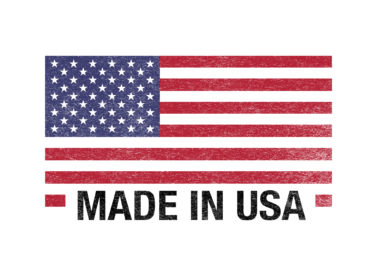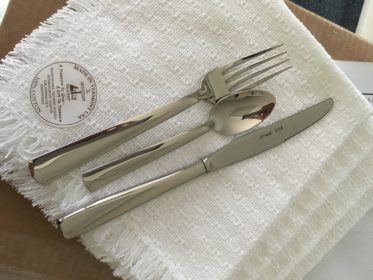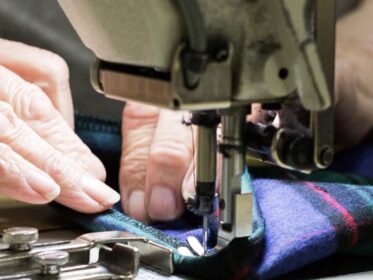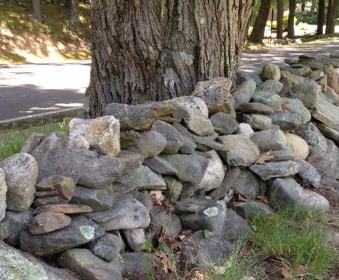In his book, The Omnivore’s Dilemma: A Natural History of Four Meals, Michael Pollan talks about the choices we face in the grocery store.
Do we buy organic or non-organic? Processed food or non-processed? GMO or non-GMO? High fat, low fat or no fat? Local, out-of-state or another country altogether?
If you’re a thoughtful shopper looking for food grown and processed here in the U.S. without undue use of pesticides or non-GMO seeds, the grocery store can become a stressful place.
It takes time to read labels or dig around on shelves looking for out-of-the-way organic or locally grown or produced products.
I’ve often found myself standing in the middle of an aisle stuck with indecision: non-organic USA grown or organic, non-USA grown? (Ultimate decision: neither.)
All of this came into play when I ordered my new bike
Since about 2001, I’ve been riding a “designed in the USA, made in China” Raleigh hybrid that I purchased back in the day when my now strapping 18-year old son fit into his child seat I installed on the back.
We spent many hours together riding around my town and on some local bike trails.
The bike has seen some hard use in its 15 years of service. My son rode it for a couple of years once he outgrew his bike.
Then I took up cycling and began putting some real mileage on it. Last summer, I knew it had reached its end of life.
The gears were crunchy, the handle bars wobbled, and the bike creaked and groaned. Plus, it simply was too clunky and too heavy for the level at which I was now riding.
When I walked into Cycles Etc. of NH earlier this spring, I quickly scanned the bikes on display and asked, “Do you have anything American-made?”
“I sure do,” said Jamie Chatigny, one of the experts who works in the shop. He proceeded to pull a bike off the rack. “This is as Made-in-America as you’re going to get because I built it.”
Oh, wow. Custom. I hadn’t considered that option but once we started talking about it, it made sense.
He asked me how and where I rode my bike and what my goals were. Basically, I wanted a bike that would allow me to simply get on it and ride — without worry.
I ride because it clears my head. I ride because it brings me joy.
The buyer’s dilemma happened when we discussed components. I really wanted a “Made-in-the-USA” bike.
Jamie told me about Gunnar, a Wisconsin-based company that makes custom frames and forks. But the components . . . a few he could get here in the U.S. but others he couldn’t.
So, I compromised. I went with the Gunnar frame/forks.
The components came from various companies and countries. I asked only that he purchase from companies that didn’t rely on exploited labor. “Yep, I get it,” Jamie said.
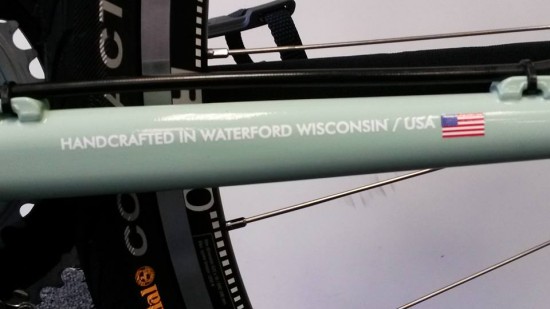
What I learned through this process
Our society is geared toward instant gratification.
When I walked into the bike shop initially, I could have purchased a bike that very day.
By going custom, I had to cool my jets. It took over a month for the frame/forks to be manufactured and then shipped.
It took another week for the parts to come in. Then, it took a couple of weeks for Jamie to build the bike.
This wait built anticipation . . . something we’ve lost with instant gratification, I realized.
Anticipation is a delicious feeling. It also increases our happiness, according to Shawn Achor, author of The Happiness Advantage.
We’ve also lost our appreciation for true craftsmanship. We’ve become immune to things not lasting long or falling apart.
Indeed, we’ve become a throw-away society because things can be so cheaply made off-shore.
Since taking possession of my bike, I’ve spent a great deal of time admiring Jamie’s craftsmanship.
It’s elegant — that’s the only word I can find to describe it. Looking at it, I can tell he put his heart into building a beautiful bike.
Beauty, elegance, and attention to detail. Pride in one’s work. Most importantly, trust.
“I trust that guy with my life”
A June 2015 Gallup poll indicates that Americans have lost trust in large institutions.
What they haven’t lost trust in is small business.
We continue to trust small business because we’re able to do business with people one-to-one.
We get to know the owners and they get to know us. We build relationships. We connect emotionally. If we’re lucky, we connect spiritually as well.
Shortly after placing the order for my bike, I was in the Benjamin Moore paint store (the paint being another U.S. made product).
As I do everywhere I go, I chatted with the shop owner. We talked about U.S. manufacturing and I mentioned I had recently purchased a custom bike.
Another customer overheard me and said, “Oh, where?”
When I told him, he said, “Jamie, right? He’s the best. You could throw one of his bikes off a cliff and it would remain intact. He built my bike and my girlfriend’s bike. I trust that guy with my life.”
Now that’s some testimonial.
And, it’s the bottom line of why we do business with people we trust.
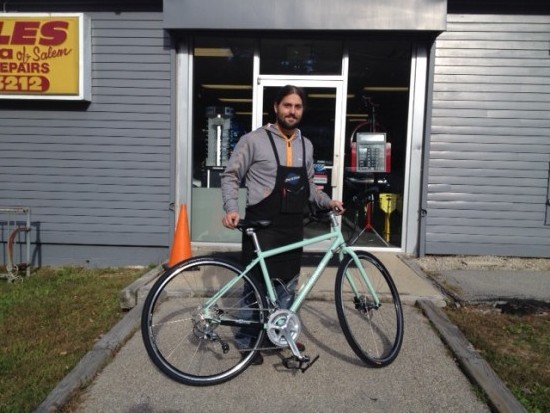
As I rode my bike on its maiden voyage earlier this week, all I could do was grin ear-to-ear — with a few “woohoos!” thrown in.
The bike rides like a dream. And knowing it was built by someone with whom I formed a connection is simply the icing on the cake.

